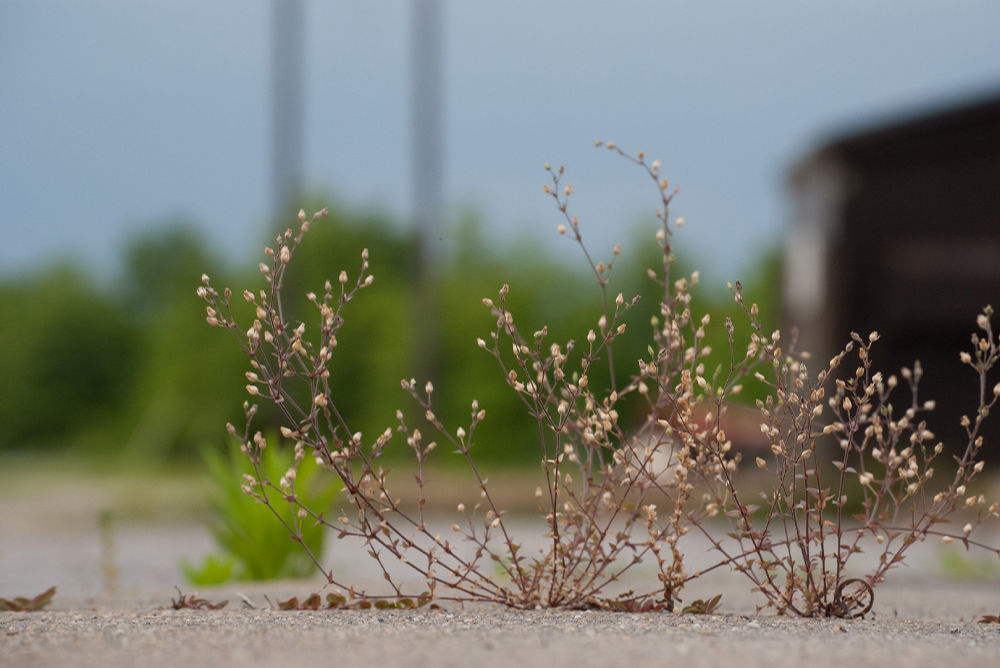
Courtesy of Cory Brown/Flickr (CC BY-NC-ND 2.0).
(The black mold fungus Stachybotrys chartarum was originally discovered on the wall of a house in Prague in 1837. The average person inhales at least 40 conidia (fungus spores) per hour.)
Action.
I zoom into the vulnerable opening, quiver shot.
Curb is a bump, tender green clad, a carpet thick,
Dry patches, razor burn. Over the occluded lines
of sidewalk, grey engraving into riotous weeds.
Sun shines on my back, bird song in the city,
world smells open, rain-fresh, steaming.
My lens finds the first stoop.
Cut.
Pan to the banister, peel, skin flakes, dry,
long strips, old paint emulsified: durable metal,
lead resists moisture for a time, now fragment,
fly, get away, fly with the wind, disseminate, go.
Action.
Sneakered foot crashes through splintery wood.
Rebalance. A teenager’s locks billow
into my view finder.
Crash’s echo finds birdwing beat, beat
inside, craw clamor.
Cut.
A heavy lock, red rusty closed hasp, over
medium-density plywood, door-shaped,
window-shaped, anchored against release.
Action.
A mold spore winks through the crack between
the crumbly window frame and new board,
angles at a cocky tilt into the wind.
Cellulose-sated, the fungus spore twirls, scents,
drifts toward damp, the open, and slips
with heaving sigh down toward inner
tree, branches welcome, to tiny end points,
round apples wet and shaken with oxygen’s
embrace. It binds itself to the wall, a painting,
memory of a home, nods on its growing stalk.
Cut.
Camera on the back of teenager on the move,
laughter peals in my ears, race to next
delivery station.



